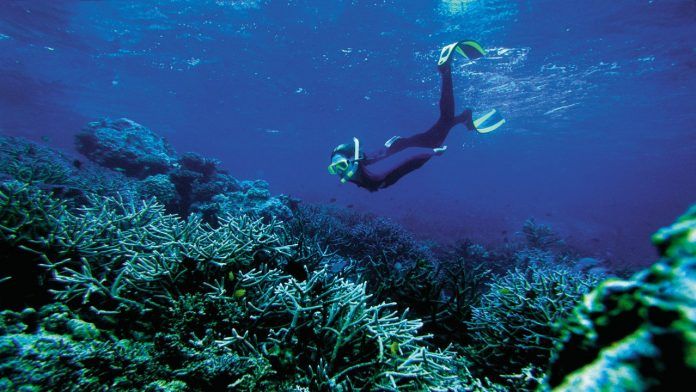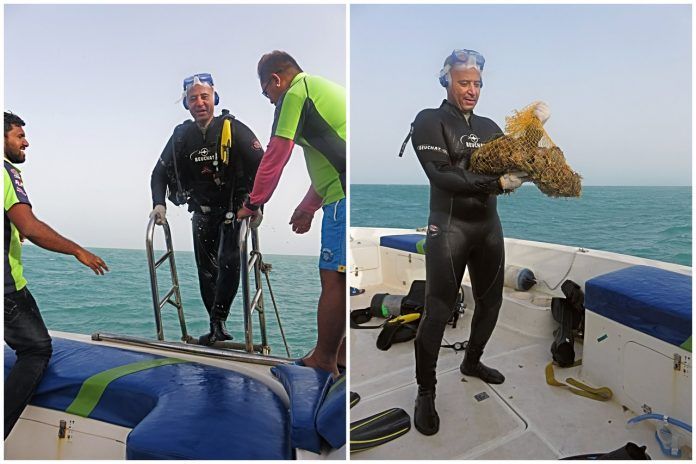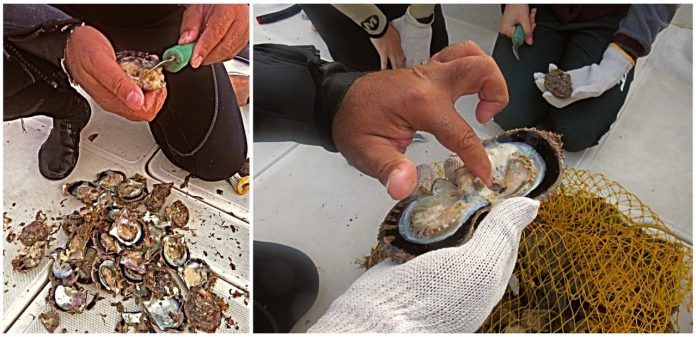Pearl Diving In Bahrain
May 31, 2019 • 37 views

Bahrain, famous for Formula 1, was once the centre of the global pearling industry. Bahrainis have been pearl diving for thousands of year. You can too.
The island nation of Bahrainis in the Arabian Gulf is most famous for Gulf oil and Formula 1 racing. Yet the country was once the centre of the global pearling industry and the Bahrainis have been diving for pearls for thousands of years right up untill the 1930's. Then the discovery of oil and the arrival of the 'Cultured Pearl' from Japan combined to consign this unique tradition to a bygone time.
“Natural pearls form when an anti-body, some form of parasite, manages to work its way into the oyster’s hard shell."
For an insight into this heritage check out displays of vintage sepia photographs at the Bahrain National Museum. It is an ideal starting point to learn about Bahrain's cultural heritage of diving for pearls, the design of the timber Dhows, the basic dive equipment used and ofcourse men who crewed the boats for month at a time. The few grainy images show every muscular sinew visible across the diver's torso, created from a life below the waves, and based on a diet of fish, dates and rice.

No doubt the frisson of excitement created when diving into the warm waters of the Gulf and ultimately opening an Oyster shell in pursuit of this most coveted and lustrous gem, is a feeling which can't have changed across millennia.
Pearl diving forms a key part of the Island kingdom's cultural identity, and a means for visitors to delve into the Bahrain's heritage, both off - shore and along the 'Pearling Trail' ; the collection of sites, in the former capital 'Muharraq', was inscribed on the UNESCO world heritage list in 2012. The narrow alleyways of white - washed facades, and heavy - set carved wooden doors, serve as a portal linking this rich heritage with a new cultural future.

The majestic 'Dhow' boats, would have left the coastline to some fanfare, with the crew's singing Bahrainis folkloric songs led by the chants of the 'Nahkam', following the regular beat of the drum, an instrument still prevalent in the music of Bahrain to this day.
Nothing can compare though to actually doing it. Standing aboard a small motorised yacht, squeezed into dive suits, surrounded by all the modern paraphernalia of seafaring, ready to head out in search of 'Pearls' was, of course, some way off the experiences of the original Bahrainis Pearl Divers.
We set out from Bahrain Yacht Club's marina, following a specific curved channel to avoid the reefs and shallow water, to an area south of the Amwaj Islands. A strong breeze, created a lively surf, which crashed into the hull of the boat throwing up salty spray.
The name 'Bahrain' derives from two Arabic words - thnain Bahr - meaning two seas which refers to the existence of fresh water springs located under the sea bed. This phenomenon is believed to be responsible for the unusual lustre of Bahrainis pearls.
After a 15 minute journey, covering 8 KM, our pearl diving guide, Ahmed El Helaly motioned for the boat engines to be put in neutral, as he peered into the water, before indicating we were at the location.

The anchor was dropped, engines switched - off and the lapping of the water against the hull was the only audible sound. In former times, Ahmed would have been known as the 'Nokhatha' or captain, who earned his position by his expertise at finding the best pearling banks, called 'Hayrat'. The aptly named 'Merchant House', the new Campbell - Gray boutique hotel, was our home in the city. The concierge has arranged our dive trip, but as they had intimated our best chance of finding pearls, was moments away from the hotel within the 'Manama Souk's' warren of alleyways. But for us it was about the journey and our opportunity to dive into a unique Bahrainis legacy.
